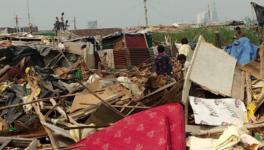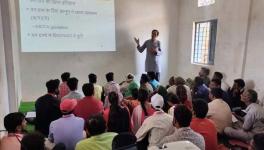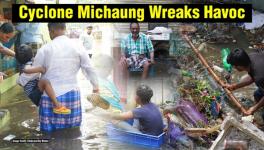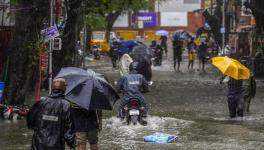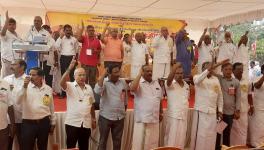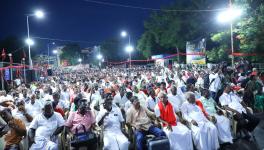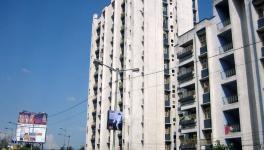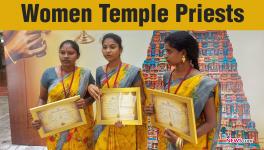Chennai is Our City, Don’t Uproot Us’: People Living on Cooum Banks in Fear of Forced Evictions
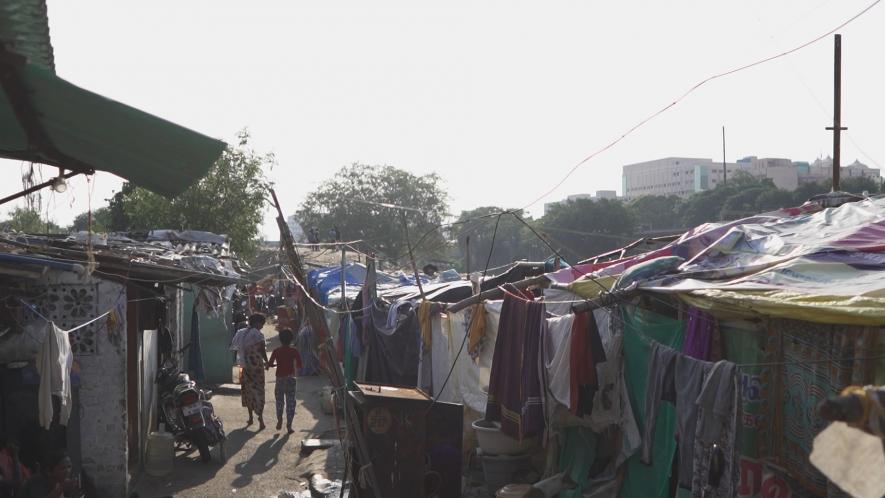
Houses on the banks of Cooum. Image courtesy: Comrade Talkies
The Tamil Nadu Slum Clearance Board (TNSCB), which was established in the 1970s to address the question of urban housing, has again come under severe attack in recent times – this time for alleged corruption charges from poor quality house construction and for demanding cash for allotting houses.
A week ago, people of Kesava Pillai (KP) park in Pulianthope area in Chennai were asked to pay Rs 1.5 lakhs if they wanted to claim the concrete houses provided by the Board. They were promised sleek apartments which would replaced their old, dilapidated houses – residents were uprooted and waited two years for the same. When the time came for occupying the houses the families were told they had to pay the amount if they wanted the houses.
A few of the families who had managed to occupy the newly-built flats raised complaints against poor quality of construction. Issues such as leaky ceilings, damaged staircases, faulty lifts, broken water pipes and other such allegations were widely reported. The TNSCB suspended two officials based on a preliminary investigation in response.
Given such treatment by the government, slum dwellers in other parts of Chennai city live in fear of the Greater Chennai Corporation (GCC) and the TNSCB.
People living along the Cooum river in Sathyavani Muthu Nagar, Gandhi Nagar and Indira Nagar constantly fear forced eviction due to the river expansion and beautification projects. They dread being dumped about 30 to 40 kms outside the city in the Perumbakkam resettlement colony.
‘WE BELONG HERE’
The TNSCB was set-up with the aim to improve slums in-situ and to provide concrete houses which would replace shanties that were prone to damage by fire and rain. However, following the evictions during the tsunami in 2004, additional evictions and resettlement colonies became popular, and these colonies kept coming up further away from their places of residence.
Moving a large chunk of the city population to a single locality, away from their place of livelihoods, has created an employment crunch. Commuting to work for several hours and spending a big portion of their income on transport is also not feasible for the residents. Those living in the city found some means of sustenance during the COVID-19 induced lockdown, unlike those in the resettlement colony in Chennai's suburbs.
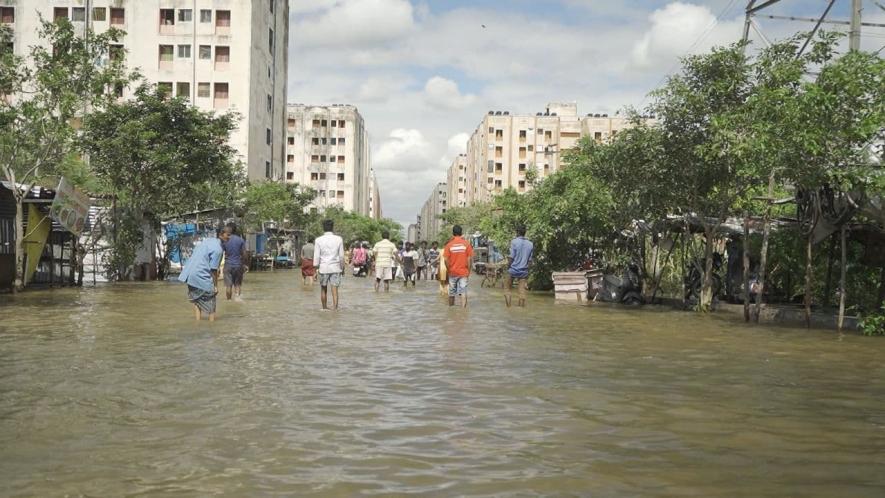
Flood in Perumbakkam. Image courtesy: Lakshmi Kanth Bharathi
Witness to the sad plight of those living in the Perumbakkam resettlement colony, people living along the banks of the Cooum have been refusing to be moved out of Chennai. They said that they have been living along the river for over three generations and that they would continue to do so.
“My grandmother lived and died here, so did my mother; and so will I,” said a woman from Gandhi Nagar.
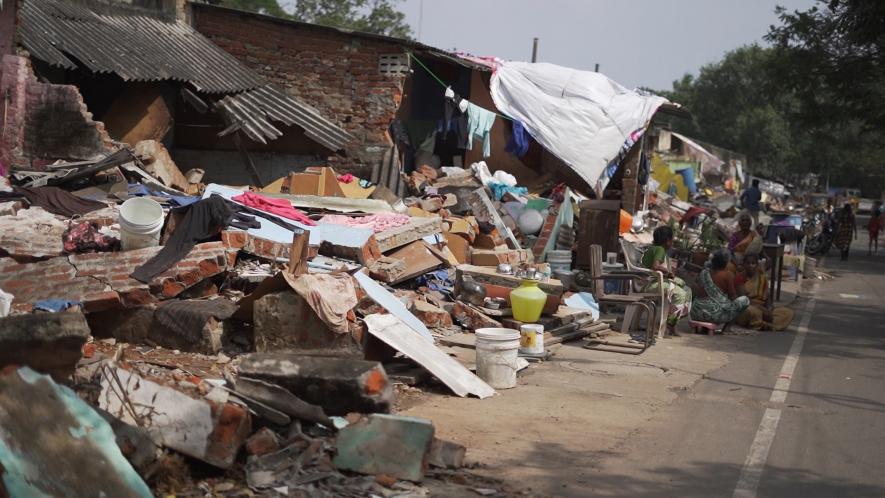
Houses demolished in Gandhi Nagar in December 2020. Image courtesy: Comrade Talkies
The Chennai Corporation, assisted by the Chennai City Police, demolished more than 450 houses as part of the Cooum restoration project in December 2020. However, the people have squatted in the same area, awaiting better days.
EXCUSES FOR EVICTING PEOPLE
In the same month last year, people from Gandhi Nagar were also asked to vacate their houses at once; it was said that heavy floods would cause damage to their houses. The people living there said that the area does not see waterlogging or flooding, not even during heavy floods five years ago.
“There was no water-logging here during the tsunami and the Vardah cyclone But, in the new slum resettlement colony in Perumbakkam, there was stagnant water up to two feet despite light rains,” said a resident of Gandhi Nagar.
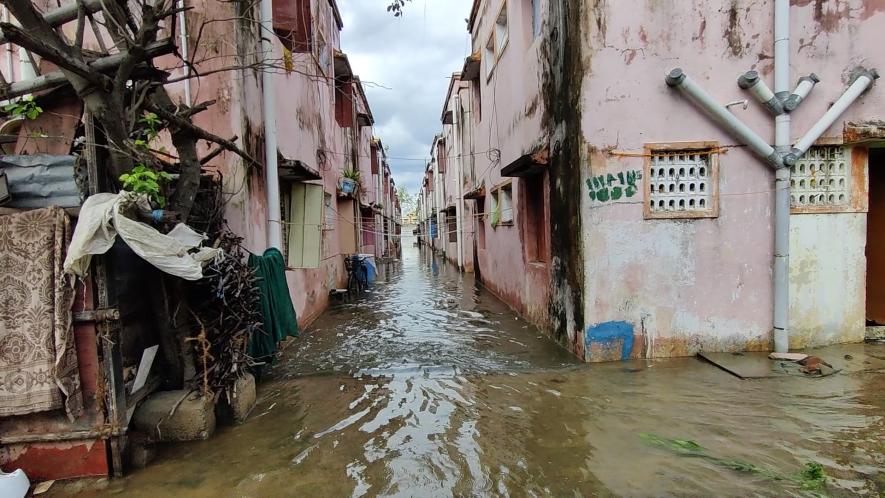
Flood in Perumbakkam. Image courtesy: Lakshmi Kanth Bharathi
These natural disasters were used as an "excuse" to remove people from their dwellings, claimed activists working among the people.
“Uprooting people from Chennai has been going on for a long time. It has been part of the policy of the ruling parties in the state. At every opportunity, natural disasters such as tsunami, cyclone and floods are used as an excuse to remove poor people from their dwellings. Otherwise, evictions happen in the name of beautifying Chennai. We strongly oppose this,” said G. Selva of the Communist Party of India (Marxist) who has been leading people on the issue in central Chennai.
Another reason given by the government for evictions is that the people had occupied the river and its banks. But, voices from the ground opposed this claim as well.
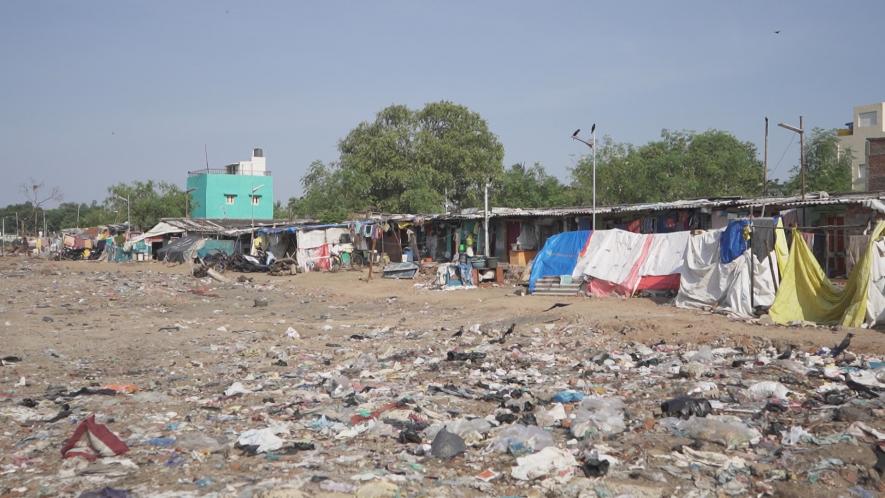
Houses on the banks of Cooum. Image courtesy: Comrade Talkies
“These houses were not constructed on occupied land of the Cooum river; neither is it about flooding. The intention to evict these people is because the government has decided to expand and deepen the river and to build a wall around it. PWD and GCC are working towards it and these people stand in the way,” claimed Selva.
“The government would not dare touch the burial ground set up by the Britishe in the same locality. Such excuses will not be given to bring down the high-rise buildings,” he added.
‘RESETTLE US WITHIN THREE KMS’
The people of Gandhi Nagar and neighbouring areas stated that they were not outright opposed to intervention by the state. They appreciated former Chief Minister Karunanidhi replacing their huts with small concrete tenements in the same locality in 1984.
However, the people have been demanding that the houses should be constructed in the same locality and that people should not be evicted from the city. If that was not possible, they said they would settle for concrete houses at least within a three-km radius.
A resident of Gandhi Nagar said: "They constructed houses in K.P. Park, but they are not allotting those to us. They are demanding lakhs of money. We are not able to understand what the government means by this.”
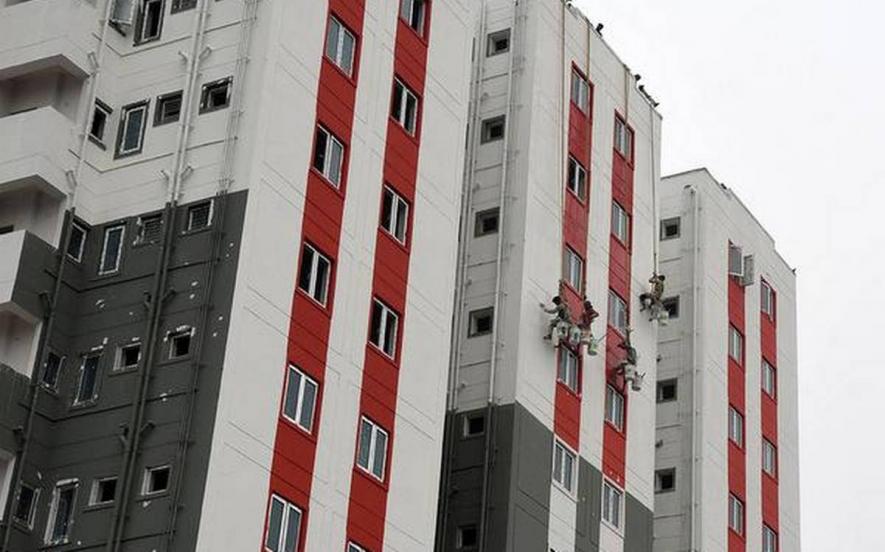
TNSCB apartments in K P Park. Image courtesy: The Hindu
Two clusters of houses – one with 834 units and another with 1,056 – were built in KP Park. Those already residing at the site were being allotted flats at the cluster that had 834 units, and people along the Cooum were meant to occupy the other cluster, but that has not happened so far.
“If the government gives houses to us in nearby KP park, our livelihood and our future would befine. We believe that Stalin will be the ‘people’s CM’ and do it for us,” said another resident.
With Singara Chennai 2.0 being heavily-funded Stalin’s chief ministership, the residents will have to wait and watch whether unruly forced evictions, such as those meted out by the previous government, will continue or not.
Get the latest reports & analysis with people's perspective on Protests, movements & deep analytical videos, discussions of the current affairs in your Telegram app. Subscribe to NewsClick's Telegram channel & get Real-Time updates on stories, as they get published on our website.











